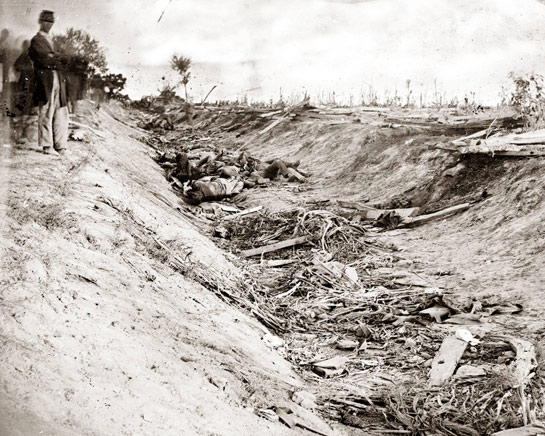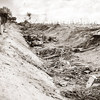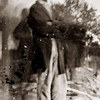Meditations on Photographs: Antietam, Md. Confederate dead in a ditch on the right wing by Alexander Gardner

There is the idea that photography steals the soul. We think that is a childish, a primitive belief. But photography’s, or more accurately the camera’s presence has a strange power over us that is not that far from stealing our soul. I had to think of that when I came across this photograph while researching images for a class on the history of photography. This is a photograph by Alexander Gardner entitled Antietam, Md. Confederate dead in a ditch on the right wing, one of the many the photographer produced around that Civil War battle (see the technical notes at the very bottom for more information about it). (more)
There were two things that struck me about this photograph. First, if you look at the corpses in the ditch, there is an uncanny echo here: Have a look at this photograph by Ronald Haeberle, taken right after the My Lai Massacre. We are looking at these corpses of Vietnamese civilians from a very similar vantage point. As a matter of fact, the spectators in Gardner’s photograph (visible in the top left corner) were even closer to the position Haeberle found himself in, a little more than one hundred years later.
Most of those spectators are not very clearly visible, except for one (see the detail of the photograph). Here we have a soldier, his arms folded across is chest, the face turned towards the camera. Given the long exposure of the photograph, the slight motion of his upper body has him blurred a little, obscuring his identity. I have no way of knowing why that soldier was standing there. It is possible that Gardner asked him to stand there - the photographer was no stranger to posing/staging, often going to extremes (such as moving corpses around, propping up their heads, etc.). But it is equally possible that the soldier had discovered the photographer at work and decided to be part of the photograph.
This is what we do when there is a camera: We love getting into the picture. Not only that. We also love getting into horrible pictures. What’s more we sometimes decide to do horrible things in horrible photographs. Why is that? A simple answer would be: Because we’re horrible people. But that is an unsatisfactory answer. As much as I know that some people are indeed horrible people, they are a very small minority. The amount of decency I have encountered in people in my life by far outweighs the amount of thuggery.
So we need a better answer. That better answer, I want to argue, is that for the most part we are decent people, but we also have horrible parts inside us. We don’t really want to admit that that is true, and most of us are lucky enough never to end in a situation where our horrible selves emerge. But things can get pretty iffy when we’re in front of a camera. A camera has the power to make us do things we might ordinarily not be so proud of.
This brings me back to a camera stealing our soul. We don’t believe in that. In fact, since we usually offer ourselves to the camera, it is but a willing taker. But something inside us can get diminished. Afterwards, we might not be so proud any longer, or have a hard time explaining things.
Why is that? What is it inside us that makes us pose next to corpses, say? What is it inside us that has us slow down on a highway so we can gawk at the scene of a horrible accident? What is it inside us that has us take or look at photographs of people who would rather jump out of a burning skyscraper than get burned alive? Why do we do that?
We might never find out what exactly it is. But whatever it might be inside us that has us do all those things, a little device - the camera - brings it out or confronts us with this strange urge. Usually, we are at least in part actively involved, because we are required to either pose or press the shutter button (or both).
If we were one of those cultures we deem primitive we would argue that the camera possesses an evil spirit. Since we are so actively involved in the process of taking pictures, being in pictures, looking at pictures, we might as well admit that that evil spirit lives inside us.
Technical note: This photograph is accessible at the Library of Congress’ archive. The original is a wet collodion stereograph. For this post I used this version.
 By
By 
